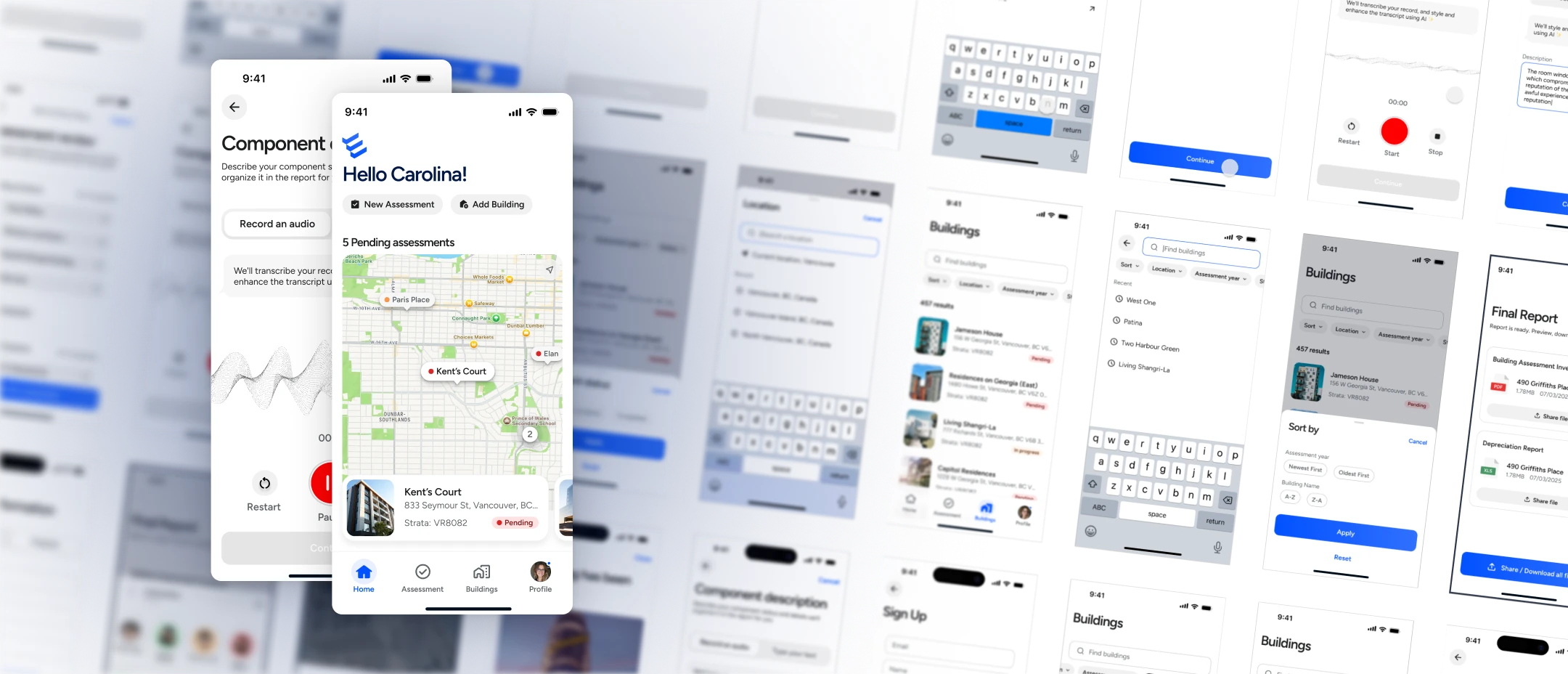
Evalo is a mobile-first platform designed to modernize the creation of Depreciation Reports required by British Columbia’s updated Strata Property Act. Traditionally, a fragmented and time-intensive process, these assessments involve collecting on-site data through handwritten notes and voice memos, followed by hours of manual compilation. Evalo eliminates this inefficiency by enabling real-time data capture, AI-powered transcription, and instant report generation, dramatically reducing time, human error, and non-compliance risk. Developed as a capstone project but scoped and executed as a real-world product, Evalo proved its viability and earned recognition for its design, clarity, and market fit.
As one of the Lead UX Designers, I shaped the product vision, structured the UX process, and led cross-functional collaboration across design and development. I worked closely with our Product Owner to ensure regulatory accuracy and guided the creation of a system-ready prototype, validated through testing and stakeholder feedback.
Evalo is a mobile-first platform that digitizes field data collection and automates the creation of Depreciation Reports, streamlining a process traditionally managed through manual workflows.
This app was developed as a real-world solution within a capstone context, in response to regulatory changes in British Columbia that require strata corporations to update Depreciation Reports every five years. While most existing tools focus on generic inspections or document storage, Evalo addresses the specific needs of field consultants, offering a dedicated B2B solution for assessment firms.
The platform is designed for scalable deployment across consulting practices, enabling teams to digitize building evaluations, maintain compliance, and reduce operational costs through AI-driven automation.

Strata corporations in British Columbia are legally required to produce and update Depreciation Reports every five years, as mandated by the Strata Property Act. These reports must include physical assessments, long-term financial forecasts, and repair planning for all common property, making them critical for legal compliance and infrastructure planning.
However, the current process used by consultants to generate these reports is entirely manual and fragmented. During site visits, evaluators rely on handwritten notes, voice memos recorded on personal devices, and photos captured separately, often without structured storage or naming conventions. Once back at the office, they must dedicate over 20 hours to transcribe audio, organize files, and manually compile a report using a combination of word processors, spreadsheets, and cloud storage tools. This lack of integration not only slows down delivery but also increases the risk of human error and inconsistencies, particularly in environments where multiple consultants work in parallel or where legal compliance is critical.
This outdated workflow leads to several systemic challenges. From an operational standpoint, the time investment per report severely limits a firm's ability to scale services or onboard new clients quickly. Without built-in validation or reporting templates, the risk of non-compliance increases, especially when information is missed or formatted incorrectly. Most importantly, despite the scale of this regulatory requirement, there is currently no platform focused specifically on depreciation assessments that combines mobile-first fieldwork with end-to-end, regulation-ready automation.
The problem was defined through regulatory research and direct input from our Product Owner, a practicing building consultant with firsthand experience producing these reports manually. Interviews and workflow mapping revealed recurring pain points:
The work environment for field consultants adds further constraints:
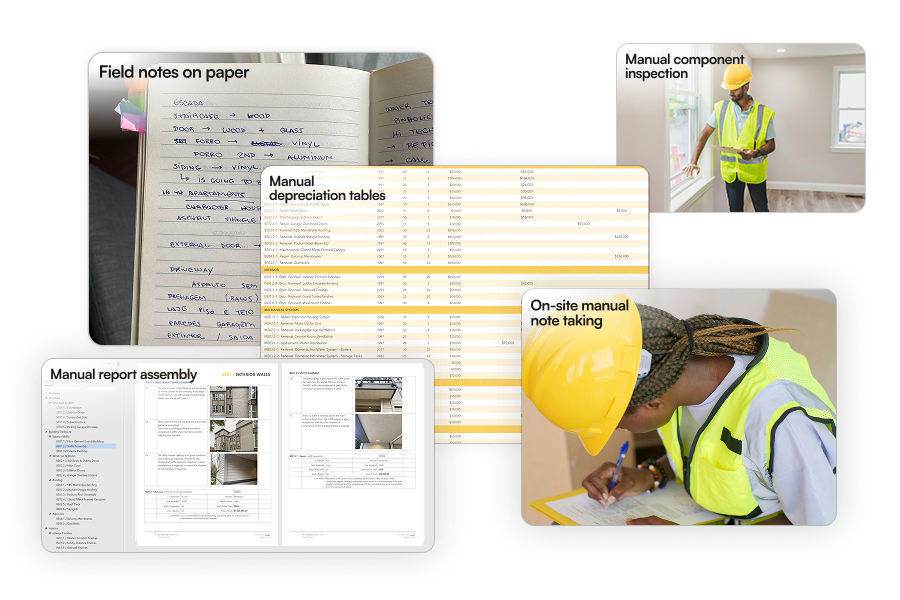
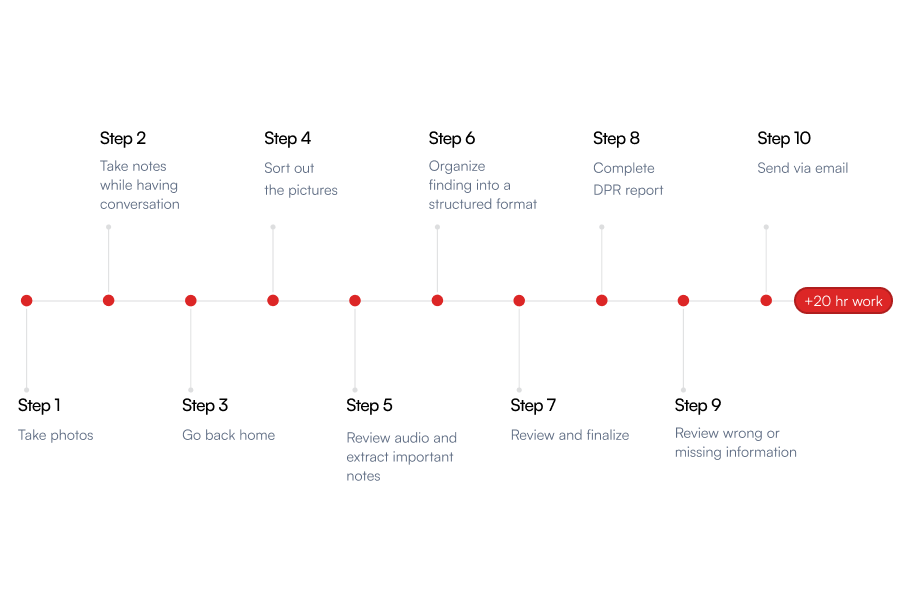
Over 34,000 strata corporations in BC must now comply with mandatory Depreciation Reports, creating urgent demand for faster, more scalable assessment tools.
Evalo was designed as a mobile-first platform that digitizes building assessments and automates the creation of Depreciation Reports in compliance with British Columbia’s updated Strata Property Act. The solution empowers consultants to capture data on-site, including photos, voice notes, and structured building information, while AI handles transcription, organization, and report generation in real time. The result is a seamless workflow that reduces manual work, improves accuracy, and accelerates delivery.
As Lead UX Designer, I contributed to shaping the product vision and led the definition of core user journeys, information architecture, and interface prototyping. Our objective was not simply to produce a prototype, but to build a deployable product framework grounded in real user needs.
We began with regulatory research and interviews with our Product Owner, an active building consultant. This helped us map the entire evaluation lifecycle, identify critical friction points, and prioritize features with the highest impact on field productivity.
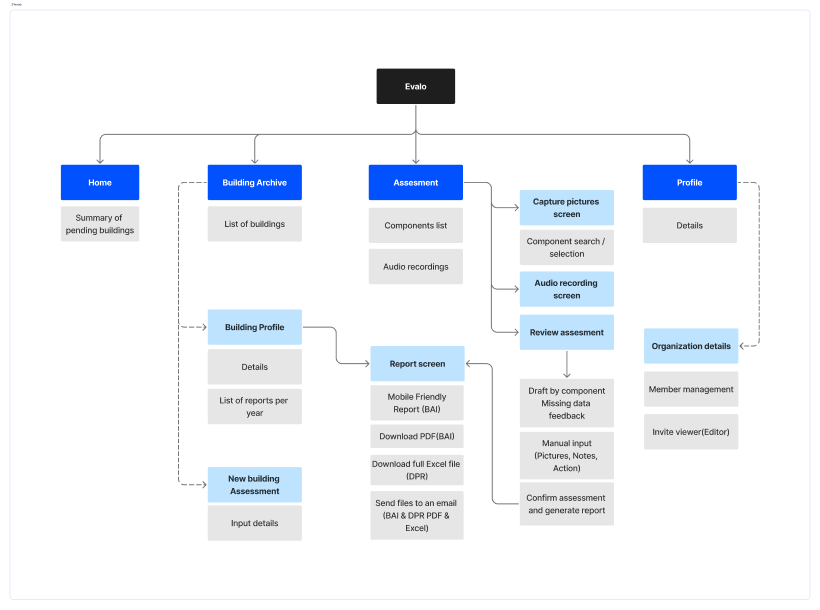
I led the design of the login and signup experience, focusing on clear navigation for new and returning users. For the Home view, I explored and iterated through several interaction models before establishing the final solution: a map-based interface, displaying up to five active or pending assessments (a limit defined by business rules). Each property is geolocated and colour-coded by status, providing quick, spatially anchored context for fieldwork planning.
For the Building Archive, which serves as a searchable, filterable log of all evaluated and pending properties, I worked on exploring filter behaviours and content grouping, balancing usability with the underlying information architecture defined earlier in the project.
I also collaborated in shaping the Building Profile (property-level overview) and worked closely on refining the assessment flow, especially the Smart Building Record and the voice transcription module. My focus was to ensure a clean, minimal experience with clearly scoped actions: consultants can record notes, review AI-generated transcripts, and adjust key statements before finalizing. I helped define limitations to prevent cognitive overload, while aligning functionality with the team’s technical constraints.
Wireframes and mid-fidelity prototypes were developed and refined through weekly design critiques and validation sessions with stakeholders. A key design decision was to keep the interface clean and focused, using progressive disclosure to reduce cognitive load and avoid overwhelming users in high-distraction environments.
We also created a custom design system from scratch to ensure UI consistency across screens and speed up front-end development. Components were built with scalability and accessibility in mind, leveraging Figtree typography to support legibility and responsive behavior. The visual design balanced regulatory professionalism with mobile usability, prioritizing clarity, structure, and frictionless input.
AI played a central role in enhancing usability: voice notes captured on-site were transcribed and summarized automatically, allowing consultants to validate and edit content before finalizing the report. This step alone replaced one of the most tedious tasks in the process and became a differentiator in usability testing.
Throughout the project, I worked closely with the development team to validate technical feasibility, anticipate scope trade-offs, and adapt flows where necessary to align with time and infrastructure constraints.
By the end of the project, we delivered a high-fidelity interactive prototype, a product pitch deck, a fully designed landing page, and a recorded demo, all aligned with our product vision and validated through feedback from real consultants.
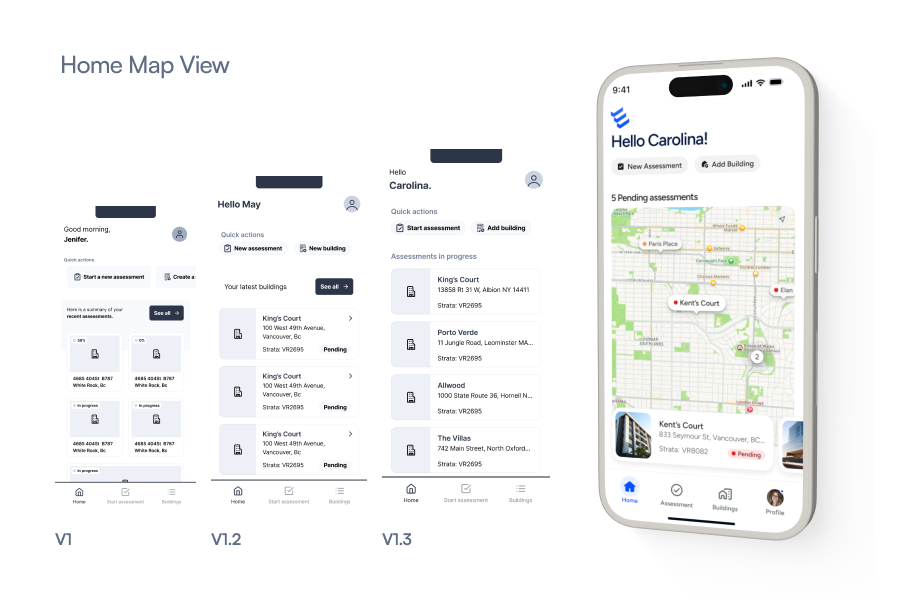
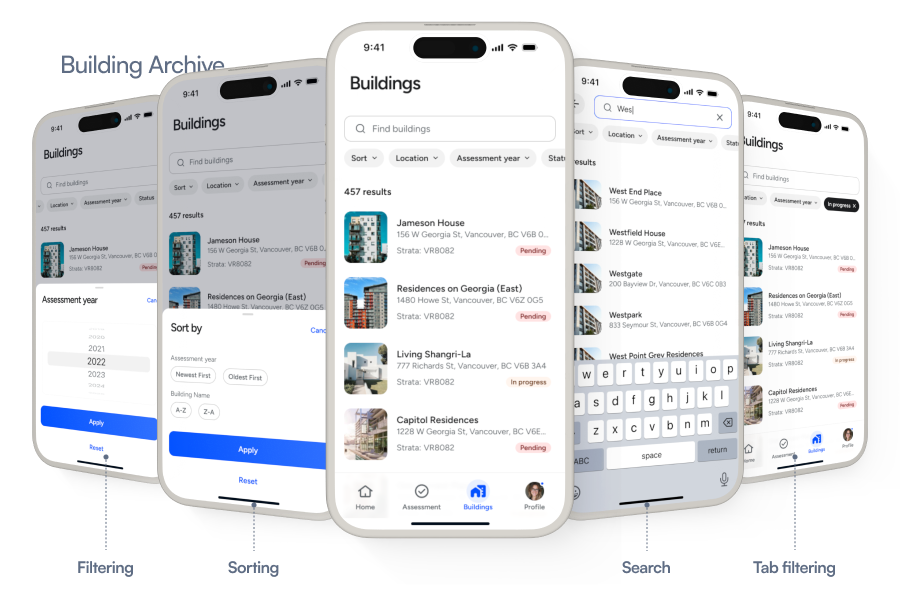
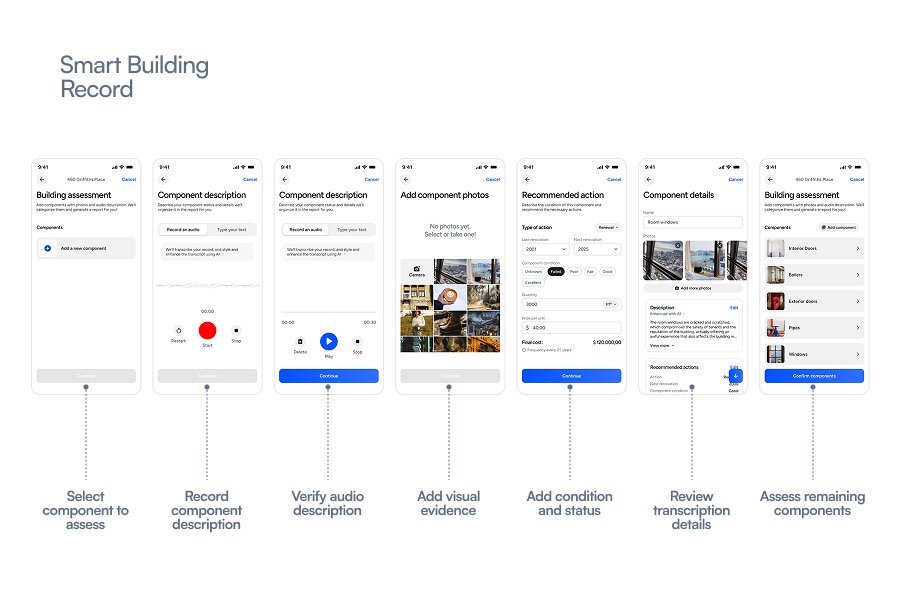
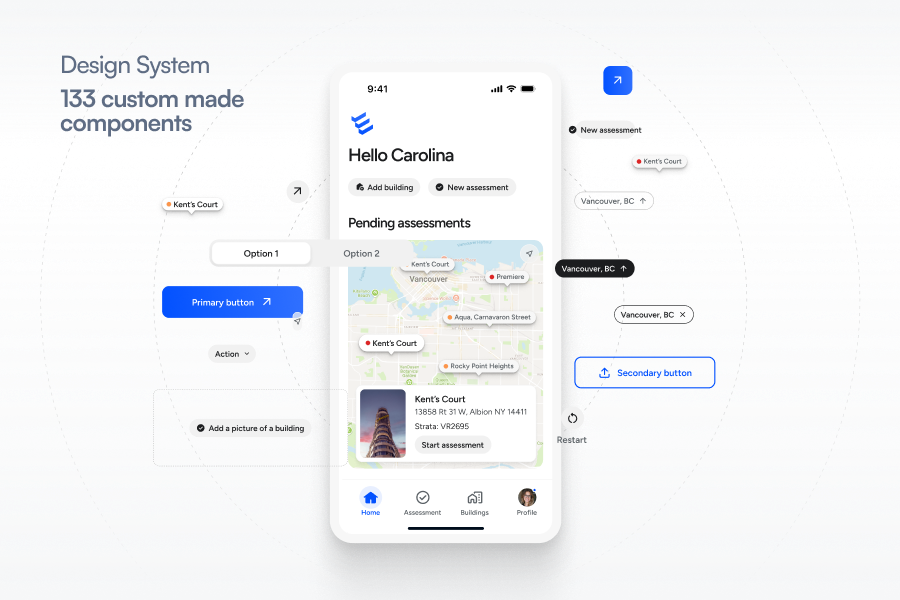
Digitizing assessments not only saves time, it standardizes reporting, reduces errors, and makes compliance effortless for consultants.
Evalo delivers tangible improvements across the building assessment workflow, replacing a highly manual, fragmented process with a streamlined, AI-enhanced solution. What traditionally took 20+ hours per report, often involving multiple tools, rework, and error-prone transcription, can now be completed in less than 4 hours, with higher consistency and better compliance.
Evalo’s design aligns directly with the business goals of consulting firms: improving report turnaround time, reducing risk exposure, and enabling predictable delivery. By modernizing an outdated and underserved workflow, the platform positions itself as a practical tool for digital transformation in the property evaluation sector.
Strategic Outcome: Evalo validates the case for specialized digital tools in regulatory workflows, demonstrating that automation, when grounded in domain insight, can simultaneously improve compliance, efficiency, and user experience.
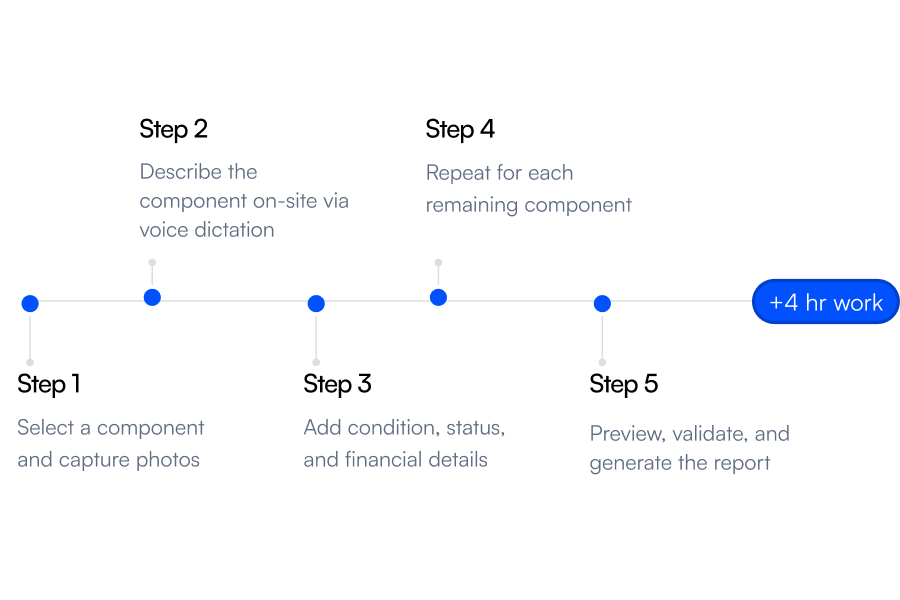
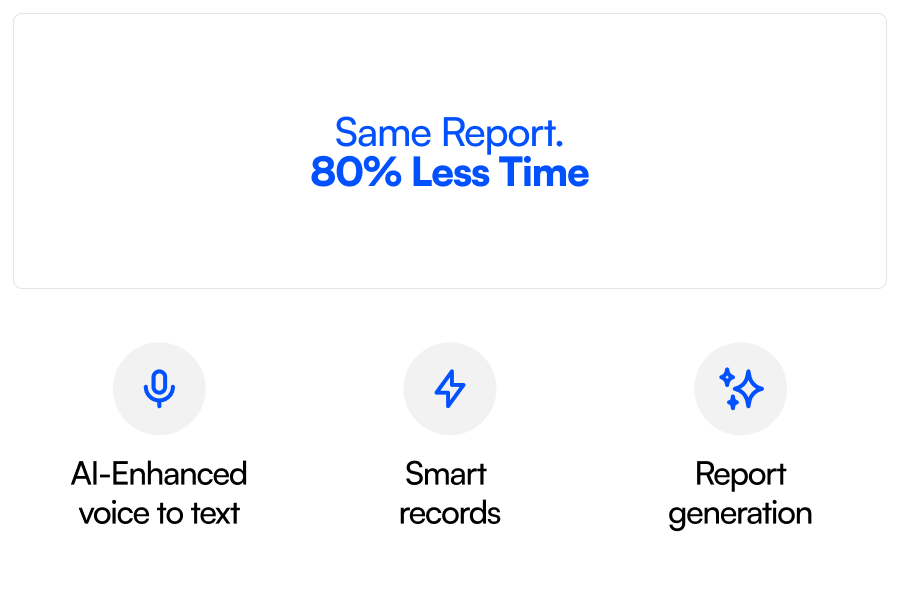
Evalo was built as a capstone project, but the challenges it addresses are very real and growing. As regulatory pressure increases and digital transformation becomes a necessity in property consulting, there’s strong potential for Evalo to evolve into a market-ready SaaS product. Future iterations could incorporate advanced analytics, team-based collaboration, and deeper integrations with municipal and client systems.